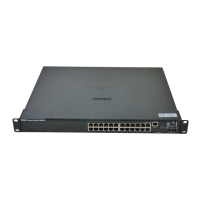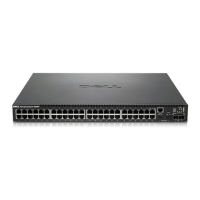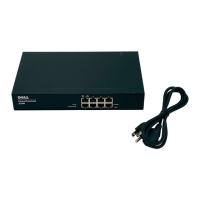SNMP Commands 339
User Guidelines
• The command logical key is the pair (ip-address/hostname, traps/informs).
• A user and notification view are not automatically created. Use the
snmp-server user
,
snmp-server
group
and
snmp-server view
Global Configuration mode commands to generate a user, group and
notify group, respectively.
• The IPv6Z address format: <
ipv6-link-local-address
>%<
interface-name
>
–
interface-name
—
vlan
<
integer
> |
ch
<
integer
> |
isatap
<
integer
> | <
physical-port-name
> | 0
–
integer
— <
decimal-number
> | <
integer
><
decimal-number
>
–
decimal-number
— 0 | 1 | 2 | 3 | 4 | 5 | 6 | 7 | 8 | 9
–
physical-port-name
— Designated port number, for example g1.
If the egress interface is not specified, the default interface is selected. Specifying interface zone=0 is
the same as not defining an egress interface.
Example
The following example configures an SNMPv3 host.
snmp-server engineID local
The snmp-server engineID local Global Configuration mode command specifies the Simple Network
Management Protocol (SNMP) engineID on the local device. Use the no form of this command to
remove the configured engine ID.
Syntax
•
snmp-server engineID local
{
engineid-string
|
default
}
• no snmp-server engineID local
•
engineid-string
— Specifies a character string that identifies the engine ID. (Range: 5 - 32
characters)
•
default
— The engine ID is created automatically based on the device MAC address.
Console(config)# snmp-server v3-host 192.168.0.20 john noauth
5400_CLI.book Page 339 Wednesday, December 17, 2008 4:33 PM

